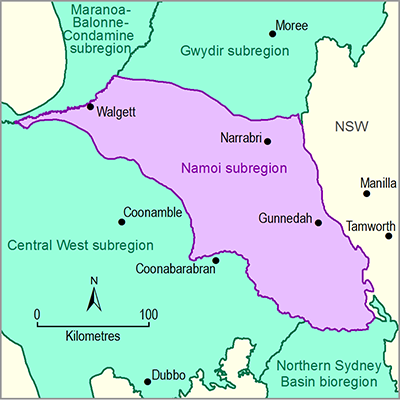- Home
- Assessments
- Bioregional Assessment Program
- Namoi subregion
- 2.7 Receptor impact modelling for the Namoi subregion
- 2.7.8 Limitations and gaps
- 2.7.8.1 Prediction of receptor impact variables
Figure 3 in Section 2.7.1.2 summarises the receptor impact modelling workflow, starting from the identification of those landscape classes that occur within the zone of potential hydrological change and that may be impacted through to the prediction of receptor impact variables at assessment units. This product concludes with the construction and interpretation of the receptor impact models, and the relationship between the receptor impact variable and one or more hydrological response variables used in the model. While this allows some assessment of the sensitivity of the response to the hydrological response variables, it needs to be stressed that these should not be interpreted as risk predictions. Receptor impact variable prediction at assessment units occurs in the impact and risk product, where the hydrological response variables are propagated through the receptor impact models to produce a range or distribution of the predicted receptor impact variable response at different time points and for the two futures considered in BA. These distributions reflect the uncertainty in the hydrological response variables, the uncertainty the experts have in the potential ecosystem response to those hydrological response variables, and the spatial heterogeneity across the landscape class.

Product Finalisation date
- 2.7.1 Methods
- 2.7.2 Prioritising landscape classes for receptor impact modelling
- 2.7.3 'Floodplain or lowland riverine' landscape group
- 2.7.4 'Non-floodplain or upland riverine' landscape group
- 2.7.5 Pilliga riverine landscape classes
- 2.7.6 'Rainforest' landscape group
- 2.7.7 'Springs' landscape group
- 2.7.8 Limitations and gaps
- Citation
- Acknowledgements
- Contributors to the Technical Programme
- About this technical product
